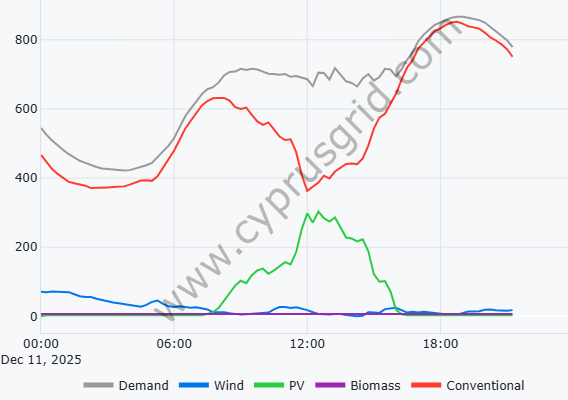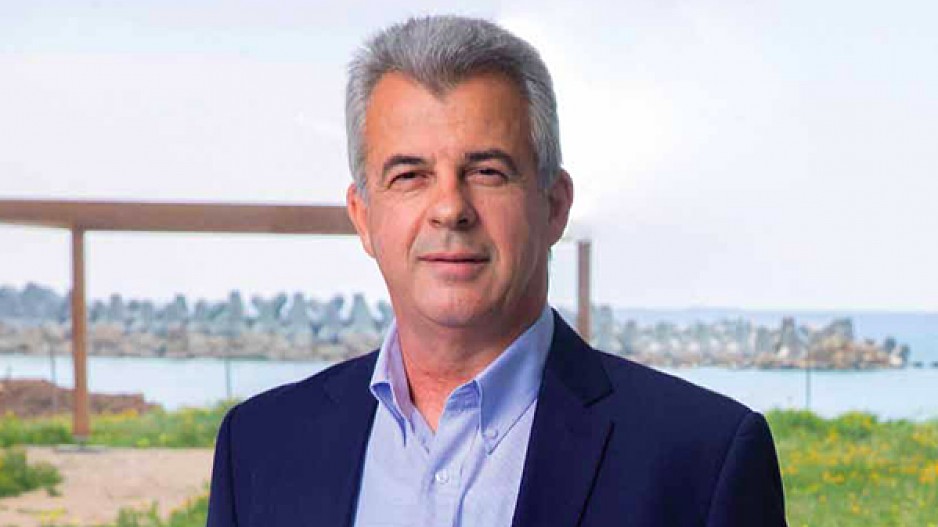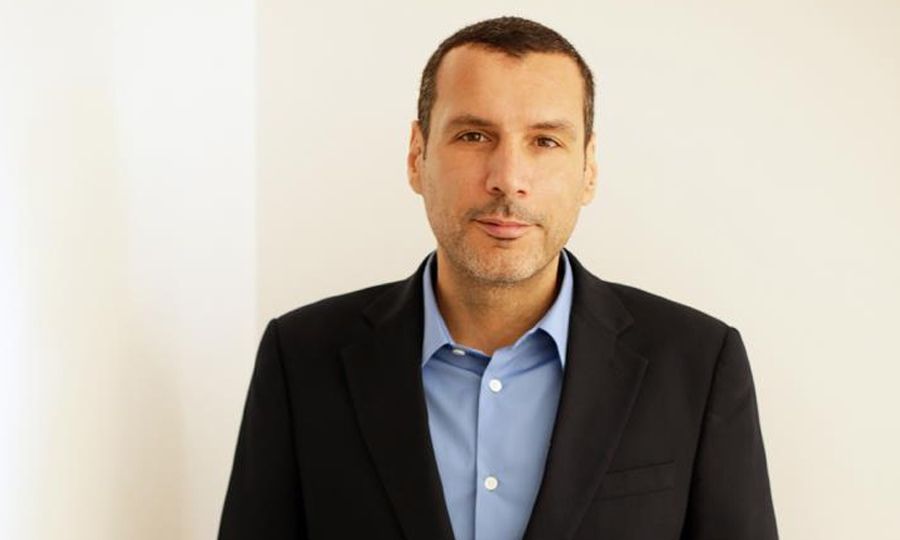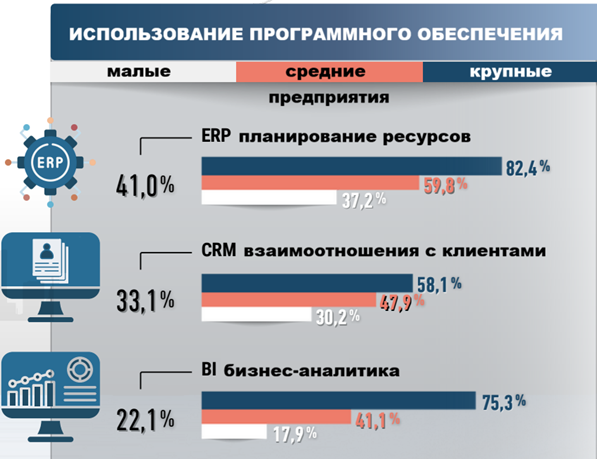С начала октября на Кипре работает конкурентный рынок электроэнергии. В его функционировании участвуют 17 компаний. Но действительно ли рынок способствует снижению цен? Какие проблемы были замечены в первые два месяца?
Обещание для потребителей было таковым: развитие конкуренции, больше выбора и снижение цен. Однако реальность оказалась иной. Кипрский рынок электроэнергии заработал с некоторыми искажениями, что еще больше увеличило стоимость электроэнергии. Издание «Филелефтерос» собрало данные для анализа ситуации.
Основное искажение обнаружено в определении клиринговой цены. В рамках свободного рынка она определяется по самой дорогой единице электроэнергии, а именно Электрической компании Кипра (EAC). Клиринговая цена является ориентиром для определения розничной цены в счете потребителя.
Почему конкурентный рынок функционировал не совсем правильно?
Потому что кипрский рынок электроэнергии:
▪ Очень маленький – мало игроков на рынке.
▪ Изолированный – нет электрической взаимосвязи с соседними странами.
▪ Сильно монополистический – EAC контролирует более 90% производства.
Выбранная модель работает в пользу потребителя на крупных и взаимосвязанных рынках (например, в Германии). Однако на кипрском небольшом и изолированном рынке она вызывает искажения, за которые потребитель дорого платит.
Как работает свободный рынок?
Для понимания масштабов искажения достаточно проанализировать ежедневную работу рынка по временным периодам:Ночь и вечер (00:00-06:30 и 16:00-24:00): EAC работает в одиночку → Выгода для EAC
Утро и день: работают EAC + ВИЭ → Выгода для EAC + ВИЭ.
Обеденное время (14:00 – 16:00): В зависимости от спроса может работать только ВИЭ или EAC + ВИЭ → Выгода для потребителя в случае работы только ВИЭ.
На очень маленьком рынке, без межсетевых соединений, всего с двумя игроками и EAC, контролирующей почти все производство, результат предопределен: потребитель несет дополнительные расходы на электроэнергию.
Согласно графику платформы «Cyprus Grid», описывающему ежедневное распределение объемов производства и цен на электроэнергию за полчаса в четверг 11 декабря 2025 года, наблюдалась такая картина.

Серым цветом обозначен спрос, красным – традиционное производство электроэнергии (EAC), зеленым – солнечная энергия, синим – энергия ветра, фиолетовым – биомасса. На этой схеме видно, что доля участия ВИЭ в покрытии спроса очень мала и ограничена лишь небольшим промежутком времени в середине дня. Именно тогда возможно падение цены на электроэнергию. В остальное же время дня цена определяется самым дорогим производством -- традиционным производством EAC.
Возобновляемые источники энергии участвуют в рынке «конкурентно», занимая лишь 3,4% от суточного спроса, и поэтому их вес в определении цены на электроэнергию незначителен. Главный вывод оценки двухмесячной работы оптового рынка заключается в том, что он перекладывает на потребителя более высокие издержки по сравнению с реальными средними издержками производства.
Возможные решения
Один вариант – установить ограничение цен на основе исследований и в соответствии с реальными издержками. Каждый раз, когда цена превышает установленный предел, разница должна автоматически возвращаться потребителям в виде снижения счетов. Ценовой потолок должен отражать реальность, чтобы не препятствовать необходимым инвестициям в хранилища и гибкие энергоблоки. Аналогичная мера была успешно реализована в Испании и Португалии (механизм «Иберийского исключения»).
Другой вариант – контракты на разницу цен (CfD), доминирующая европейская практика последних лет, внедренная в Великобритании, Франции, Польше, Греции и других странах. Эта система используется для поддержки ВИЭ и снижения зависимости ВИЭ от цен на традиционную энергию. По данным Европейской комиссии, «контракты на разницу цен» (CfD) обеспечивают инвесторам гарантированный доход и защиту потребителей, а Греция является особенно успешным примером их внедрения.
Целевая модель, внедренная на Кипре, не является ошибочной – она просто не подходит для специфики малого острова в том виде, в котором она существует. Ее возможно быстро и грамотно исправить, не меняя принципов работы.
Текст подготовлен по материалам Phileleftheros.
Читайте также:
Центральный банк Кипра опубликовал данные о годовом росте цен на жилье. В целом цены выросли на 5%, причем квартиры пользуются большим спросом, чем частные дома. Также рост стоимости разнится по регионам. Что говорят о рынке недвижимости новые данные?
Центральный банк Кипра опубликовал отчет о годовой рост цен на жилье за третий квартал 2025 года.
ЦБ отмечает новый рост индекса цен на жилье в третьем квартале 2025 года, при этом цены на квартиры растут быстрее, тогда как темп роста цен на частные дома в ряде регионов замедлился. Общая картина рынка отражает высокий спрос, а также постепенное увеличение предложения и продолжающуюся кредитную экспансию.
Общий индекс цен на жилье показал годовой рост на 5%, по сравнению с 4,7% во втором квартале. В квартальном исчислении индекс вырос на 1,2%, что свидетельствует о небольшом замедлении по сравнению с 1,5% в предыдущем квартале.
Цены на квартиры выросли на 1,7% в квартальном исчислении и на 6,4% в годовом исчислении.
Цены на дома выросли на 0,4% в квартальном исчислении и на 2,6% в годовом исчислении, что свидетельствует о явном замедлении.
Индекс цен по регионам
По регионам наблюдаются значительные различия:
• Лимассол: рост общего индекса на 7,1%
• Ларнака: рост на 7,3%
• Пафос: замедление роста до 8,9%
• Никосия: снижение на -0,5%
• Фамагуста: снижение на -0,3%
В сегменте частных домов Никосия показала четвертое подряд годовое снижение (-2,7%), снижение также наблюдалось в Фамагусте (-1,6%). Напротив, цены на квартиры выросли во всех регионах, кроме Никосии: 5% в Лимассоле, 9,6% в Ларнаке, 10,5% в Пафосе и 5,9% в Фамагусте.
Количество сделок
По данным Земельного кадастра, количество сделок увеличилось на 8,9% (4444 по сравнению с 4081 в третьем квартале 2024 года).
• Продажи кипрским покупателям: +8,6%
• Продажи иностранным покупателям: +9,3%
По регионам заключено сделок:
• Лимассол: 1431,
• Никосия: 981,
• Ларнака: 921,
• Пафос: 878,
• Фамагуста: 233.
Важным моментом является то, что в Пафосе 68% покупателей – иностранцы.
Кредитование
Рынок поддерживается увеличением новых жилищных кредитов, которые составили:
• 972 млн евро за период с января по сентябрь 2025 года
• +22% по сравнению с 2024 годом
Средняя процентная ставка по ипотечным кредитам снизилась до 3,03% в сентябре 2025 года с 4,27% годом ранее. Банки ожидают роста чистого спроса в четвертом квартале, в то время как стандарты кредитования остаются жесткими, но стабильными.
Предложение
Количество разрешений на строительство выросло, а строительная активность остается стабильной:
• +4,6% по количеству разрешений на строительство (январь-июль 2025 г.)
• 8 кварталов подряд положительной строительной активности
• Индекс цен на строительные материалы вырос на 1,3%
Ожидания относительно будущего роста цен ослабли: соответствующий индекс ЕС снизился до 25,5 с 56,2 годом ранее, что указывает на более сдержанный ожидаемый рост цен.
Текст подготовлен по материалам Phileleftheros.
Читайте также:
Последние данные по ставкам и уровню кредитования
Рынок недвижимости: строят много, но не то
Министр финансов провел встречу с представителями партий, имеющих большинство в парламенте, чтобы обсудить предлагаемые ими поправки к налоговой реформе. Министерство согласилось с рядом выдвинутых предложений. Вот что собираются изменить в проекте реформы.
Встреча представителей партий с министром финансов Макисом Керавносом состоялась 9 декабря. В обсуждении участвовали партии ДИСИ, ДИКО, ДИПА и ЭДЕК.
Предложенные поправки
• Ожидается, что необлагаемый налогом доход достигнет 22 000 евро (по сравнению с 20 500 евро, предусмотренными законопроектом ранее), согласно совместной поправке партий.
• Размер дохода, допускающего налоговые вычеты, увеличивается с 80 до 90 тысяч евро, при этом в зависимости от количества детей лимит будет дифференцирован в сторону увеличения.
• При наличии в семье двоих детей налоговые вычеты возможны при годовом доходе до 100 тысяч евро, для трех или четырех детей – до 150 тысяч евро, а для более чем четырех – до 200 тысяч евро.
• Кроме того, партии также представят поправку о поэтапном увеличении налоговых вычетов.
• Вычет в размере 1000 евро на одного ребенка сохранится, для двух детей вычет увеличится до 1250 евро, а для трех и более – до 1500 евро. Кроме того, вычеты по процентам по обслуживаемому ипотечному кредиту и арендной плате увеличатся до 2000 евро.
• Партии также представили поправку об отмене гербового сбора.
Что Министерство финансов принимает
После встречи с депутатами министр финансов Макис Керавнос заявил, что министерство согласится с увеличением необлагаемой налогом суммы и постепенным повышением критерия дохода для налоговых льгот в зависимости от размера семьи.
Министр также сообщил, что стороны договорились об отмене гербового сбора. «Мнения были во многом схожи, и я ожидаю, что в рамках принятых правительством поправок мы можем двигаться дальше в реализации налоговой реформы», – добавил он.
На вопрос о том, соответствуют ли предлагаемые партиями изменения бюджетным возможностям государства, министр ответил: «Уверяю вас, что в Министерстве финансов ничего не принимается и не продвигается, если это не соответствует строгой фискальной политике, которую мы проводим».
Текст подготовлен по материалам Phileleftheros.
Читайте также:
От морских месторождений до строительства терминала сжиженного природного газа и связанных с ним правовых вопросов – новый министр энергетики Михалис Дамианос унаследовал самый сложный энергетический портфель на сегодняшний день. С какими трудностями он столкнется и что придется решать как можно скорее?
Михалис Дамианос становится министром энергетики, торговли и промышленности в один из самых критических моментов в истории министерства. Как сообщает издание Brief, ожидается, что новый министр уделит большое внимание ускорению разработки правовой и нормативной базы, укреплению корпоративной структуры крупных проектов и продвижению международных юридических соглашений.
Имея опыт работы в международных юридических фирмах, таких как Simmons & Simmons и Hogan Lovells, новый министр энергетики, торговли и промышленности Кипра призван решить ряд важных и деликатных вопросов, связанных с энергетической политикой, экономикой, геополитическим балансом и правовыми аспектами сотрудничества с энергетическими компаниями. Его работа будет сосредоточена в первую очередь на процессах нормативно-правового оформления и надзора за соблюдением соглашений с заинтересованными сторонами, включая передачу полномочий оператору системы передачи электроэнергии.
Ключевые вопросы, с которыми столкнется новый министр
1. Управление буровыми работами и месторождениями природного газа в исключительной экономической зоне (ИЭЗ) Кипра. Сюда входит и процесс принятия решений об оптимальном методе разработки этих ресурсов, включая варианты экспорта и сжижения.
2. Завершение строительства терминала СПГ в Василико, считающегося важнейшим проектом для энергетической безопасности и будущего экспорта газа.
3. Обеспечение жизнеспособности крупных проектов межсистемных соединений, таких как трубопровод Great Sea Interconnector, с особым вниманием к правовому статусу Кипра.
4. Ускорение перехода к более экологичной энергетической модели в соответствии с европейскими целями.
5. Развитие возобновляемых источников энергии и решение проблем национальной электросети.
6. Управление электроэнергетическим сектором, включая стабильность сети и ценообразование на электроэнергию.
7. Урегулирование энергетических вопросов в более широком контексте геополитической напряженности в Восточном Средиземноморье и поддержание регионального сотрудничества.
Особенно важной обязанностью министра и его министерства станет их роль в период председательства Кипра в Совете ЕС в следующем месяце, где, как ожидается, энергетическая повестка и переход к зеленой энергетике будут приоритетными.
Урегулирование нерешенных правовых вопросов
Как юрист, Михалис Дамианос должен будет придерживаться структурированного подхода к решению правовых вопросов и расследований, связанных с деятельностью его министерства.
Например, в отношении проекта СПГ ожидается переоценка правовой основы спора и условий договора с целью определения наиболее подходящей стратегии – дальнейшего рассмотрения спора, поиска урегулирования или расторжения договора.
В связи с расследованием Европейской прокуратуры (ЕППО) в отношении Great Sea Interconnector, министр должен обеспечить всестороннее сотрудничество между министерством, соответствующими государственными органами (включая оператора газотранспортной системы) и ЕППО, предоставив всю необходимую документацию и доказательства.
Ключевым аспектом этого процесса является разграничение уголовного или судебного аспекта, связанного с прошлыми действиями, от продолжения проекта, затрагивающего будущее и энергетическую безопасность острова.
Краткая биография нового министра
Михалис Дамианос приобрел значительный опыт работы в энергетическом секторе во время своей юридической карьеры в международных юридических фирмах Simmons & Simmons и Hogan Lovells в Лондоне, где он специализировался на корпоративных, коммерческих и энергетических вопросах.
В Лондоне он в основном занимался слияниями и поглощениями в энергетическом секторе, участвуя в нефтегазовых сделках, включая проекты в Северной Африке, на Ближнем Востоке, в Индонезии и на Украине. Он также участвовал в сделках в сфере возобновляемой энергетики, таких как ветряные электростанции и заводы по переработке отходов в энергию.
После возвращения на Кипр он работал в юридической фирме в Никосии, а затем в 2010 году основал собственную фирму Michael Damianos & Co LLC. Фирма, из которой он ушел перед вступлением в должность министра, предоставляет юридические консультации по вопросам энергетики, включая поддержку проектов в области возобновляемых источников энергии, и публикует раздел, посвященный Кипру, в международных юридических изданиях об энергетическом секторе.
Текст подготовлен по материалам Fast Forward.
Читайте также:
Перестановки в правительстве Кипра
Три энергетических проекта Кипра в приоритете Еврокомиссии
Президент Никос Христодулидис принял решение провести реорганизацию правительства. Четыре человека покинули кабинет, причем только один из них остался на работе в высшем госуправлении. Ни у одного из четырех новых чиновников нет предыдущего опыта работы на министерском посту. Что о них известно?
Предыдущий глава Минздрава Михалис Дамианос перешел на должность министра энергетики, торговли и промышленности. Бывший министр юстиции Мариос Харциотис назначен уполномоченным при президенте.
Высшие эшелоны власти покинули Яннис Панайоту (бывший министр труда), Йоргос Папанастасиу (бывший министр энергетики) и Марилена Эвангелу (бывшая глава Подминистерства социального обеспечения). Президент поблагодарил уходящих членов кабинета за их работу и прекрасное сотрудничество.
Новые назначения:
― депутат от партии ДИПА Маринос Мушуттас назначен министром труда;
― портфель министра юстиции получил Константинос Фитирис,
― а министра здравоохранения ― Неофитос Хараламбидис;
― Подминистерство социального обеспечения возглавит Клея Хаджистефану-Папаэллина.
Министр труда и социального страхования Маринос Мушуттас
Родился в Каймакли в 1964 году. Его отец – член организации ЭОКА и один из основателей «Демократической партии» (ДИКО) Никос Мушуттас. Учился в Университете штата Нью-Йорк по специальности «Менеджмент организации», магистерскую степень получил на Кипре, в Средиземноморском институте менеджмента, по специальности «Государственное управление». Трудился в Министерстве финансов, Министерстве труда и офисе президента. Был избран в муниципальный совет Никосии, где курировал финансовые субсидии европейских инвестиционных фондов. Был избран в парламент от партии ДИКО, которую покинул в 2020 году, чтобы основать партию «Демократический альянс» (ДИПА). От нее был избран в парламент в 2021 году. Занимал должности зампредседателя парламентских комитетов по финансовым вопросам и по энергетике, развитию торговли, промышленности и туризма. Председатель управляющего совета спортивного клуба «Ахиллеас» Каймакли.

Маринос Мушуттас. Фото kathimerini.com.cy
Министр юстиции и общественного порядка Константинос Фитирис
Родился в Паралимни в 1960 году. Учился в Греческой военно-морской академии, затем поступил на службу в Национальную гвардию. Параллельно со службой получил специальность инженера. В общей сложности посвятил военно-морской службе 40 лет. Вышел в отставку в 2018 году в чине контр-адмирала. В январе 2019 года назначен на пост директора марины Айя-Напы.

Константинос Фитирис. Фото ant1live.com
Министр здравоохранения Неофитос Хараламбидис
Родился в Лимассоле в 1978 году. По образованию юрист, обладатель магистерского диплома профессионального юридического образования и магистерской степени по праву. Был председателем лимассольского отделения молодежной организации Демократической партии. Член ЦК той же партии, ее региональный секретарь по Лимассолу. В муниципалитете Лимассола возглавляет Отдел культуры.

Неофитос Хараламбидис. Фото kathimerini.com.cy
Глава Подминистерства социального обеспечения Клея Хаджистефану-Папаэллина
Училась в Калифорнийском университете в Беркли, получив бакалаврскую степень в 1988 году по специальности «Физическая культура». Степень магистра получила в Университете штата Калифорния в Чико с 1989 по 1990 год, по той же специальности. Диссертацию по физкультуре защитила на философском факультете Афинского национального университета им. Капподистрии в 1996 году. Много лет работала в Кипрском олимпийском комитете, занимаясь вопросами волонтерства, эстафет, культурных олимпиад и олимпийского обучения. Была членом и председателем Кипрской спортивной организации, членом исполкома Кипрского олимпийского комитета, замдекана Олимпийской академии Кипра. Преподает на кафедре физической культуры Университета Кипра. Председатель НКО «Фони», которая занимается защитой прав детей.

Клея Хаджистефану-Папаэллина. Фото kathimerini.com.cy
Текст подготовлен по материалам «Филелефтерос» и Cyprus Mail.
На каком этапе цифровизации находится кипрский бизнес сейчас? Данные Статистической службы Кипра за 2025 год показывают, сколько предприятий используют высокоскоростное интернет-соединение, внедряют программное обеспечение для бизнеса и используют искусственный интеллект. Инфографика для наглядности.
Отчет Статистической службы Кипра, посвященный использованию информационно-коммуникационных технологий и электронной коммерции на предприятиях в 2025 году, показал, что 87,3% предприятий на Кипре пользуются высокоскоростным интернет-соединением – со скоростью выше 100 Мбит/с. В 2021 году этот показатель составлял 44,8%.
В 2025 году наиболее используемая скорость загрузки составляла от 100 до 500 Мбит/с (таким соединением располагали 36,5% всех предприятий Кипра). На втором месте по частоте использования оказалась скорость загрузки более 1 Гбит/с (26,2% компаний), за ней – скорость от 500 Мбит/с до 1 Гбит/с (24,6%).

Электронная коммерция
В 2024 году почти каждое четвертое предприятие (23,9%) получало заказы на товары и услуги онлайн, причем 23% компаний – через веб-сайты или приложения и 1,9% – через сообщения типа EDI. 17,1% всех предприятий получали заказы через собственные веб-сайты или приложения, а 14,1% – через веб-сайты или приложения электронной коммерции, используемые несколькими предприятиями. Кроме того, 21,9% предприятий получали таким образом заказы от частных клиентов, в то время как 10% – от других компаний и/или от правительства или государственных органов.


Искусственный интеллект
В 2025 году технологии искусственного интеллекта использовали 9,3% всех предприятий Кипра. В 2021 году таковых было всего 2,6%. По данным Статистической службы Кипра, ИИ используют 35,1% крупных компаний, 15,3% средних и 7,7% малых.
Что понимается под ИИ? Это системы, использующие такие технологии, как:
• интеллектуальный анализ текста,
• компьютерное зрение,
• распознавание речи,
• генерация естественного языка,
• машинное обучение,
• глубокое обучение.
Целью использования является сбор и/или применение данных для прогнозирования, рекомендации или принятия решений о наилучших действиях для достижения конкретных целей.
Внедрение технологий ИИ неуклонно растет на предприятиях всех размеров, отмечает Статистическая служба Кипра. Использование ИИ крупными компаниями выросло с 13% в 2021 году до 35,1% в 2025. Средних предприятий, применяющих его в своей работе также стало гораздо больше: с 5,4% в 2021 году до 15,3% в 2025 году. В малом бизнесе этот показатель вырос с 1,9% до 7,7%.

Какое программное обеспечение используют?
Система планирования ресурсов предприятия (ERP) – наиболее популярное программное обеспечение, используемое предприятиями на Кипре. ERP состоит из набора программных приложений, которые интегрируют информацию и процессы в рамках различных бизнес-функций (например, бухгалтерский учет, планирование, производство, маркетинг). Программное обеспечение ERP в 2025 году использовали 41% предприятий.
Второй по популярности стала система управления взаимоотношениями с клиентами (CRM). Под ней понимается любое программное обеспечение, используемое для управления информацией о клиентах. CRM-системы собирают информацию о клиентах из различных источников, интегрируют ее в единую базу данных, обрабатывают и анализируют информацию, связанную с клиентами. 33,1% всех предприятий на Кипре используют CRM-системы.
Третье по популярности программное обеспечение – это системы бизнес-аналитики (BI). Они обеспечивают доступ к данным из внутренних ИТ-систем и внешних источников, их анализ и представление аналитических результатов в виде отчетов (сводок, графиков, диаграмм и т. д.), предоставляя пользователям подробную информацию для принятия решений и стратегического планирования. 22,1% всех предприятий используют BI-системы.
Согласно результатам опроса, существует связь между размером предприятия и вероятностью использования им бизнес-ПО, такого как ERP, CRM или BI. Малые предприятия, реже используют эти инструменты, чем крупные.
Статистическая служба Кипра отметила, что 33,7% всех предприятий заявили, что их сотрудники выполняют аналитику данных из любых источников, как внутренних (из собственных информационных систем предприятий, собственных веб-сайтов или социальных сетей), так и внешних (из других предприятий, государственных органов или общедоступных данных с веб-сайтов или социальных сетей). Кроме того, 16% предприятий предпочитают нанимать поставщика услуг для проведения аналитики данных, а не делать это самостоятельно.

Предприятия, использующие экологически безопасные процессы
Также отмечается, что 25,4% всех предприятий используют ИТ-системы или решения для снижения энергопотребления, а 22,3% используют ИТ-системы для сокращения расхода материалов или использования переработанных материалов.
68,6% предприятий утилизируют неиспользуемое ИТ-оборудование (например, компьютеры, мониторы) через пункты сбора/переработки электронных отходов, 53,2% оставляют его у себя (для запасных частей), а 32,6% продают, передают в дар или возвращают по лизингу.
Текст подготовлен по материалам Cyprus Business News и CyStat.
Читайте также:
Кипрский парламент окончательно убрал из закона нормы, позволявшие правительству предоставлять гражданство иностранным инвесторам, а также почетное гражданство. Принятые изменения закрывают юридические пробелы после отмены программы «золотых паспортов» и вводят процедуры пересмотра прежних решений, что должно удовлетворить требования Евросоюза.
Согласно закону, принятому 4 декабря на последнем пленарном заседании парламента в этом году, правительство больше не имеет полномочий предоставлять гражданство иностранцам, их супругам и детям в обмен на инвестиции, как это было в период действия программы «золотых паспортов». Сама схема, напомним, была отменена в ноябре 2020 года. Но положения, дающие Совету министров полномочия выдавать кипрские паспорта, оставались в силе.
Правительство также лишилось права выдавать почетное гражданство. Например, детям греческих военных, погибших во время событий 1974 года, или иностранным гражданам, преуспевшим в сфере искусства.
Кроме того, новый закон:
― вводит процедуру пересмотра решений о предоставлении гражданства по ранее действовавшей программе;
― устанавливает срок в 60 дней для обжалования решения о лишении гражданства в специальном Независимом комитете;
― обязывает правительство публиковать имена тех, кого лишили гражданства, в «Официальном правительственном вестнике».
Все эти изменения были сочтены необходимыми ради того, чтобы остановить разбирательство, начатое Евросоюзом против Кипра.
Один из депутатов назвал заседание, на котором были приняты изменения, «панихидой по программе золотых паспортов». Другой парламентарий отметил, что по вине Евросоюза Кипр лишился суверенного права предоставлять почетное гражданство и натурализовывать иностранных граждан.
За прошедшие годы по схеме предоставления гражданства за инвестиции кипрский паспорт получили 7329 человек. Из них 3522 человека были собственно инвесторами, остальные – членами их семей.
Текст подготовлен по материалам Cyprus Mail и «Политис».
Читайте также:
Могут ли демографические изменения повлиять на работу банков или даже создать новые условия в финансовой системе? Наблюдательный совет Европейского центрального банка провел исследование демографической ситуации в странах ЕС и пришел к неутешительным выводам.
Исследование Патрика Монтаньера, члена Наблюдательного совета ЕЦБ, было направлено на то, чтобы признать изменение демографической среды, в которой работают банки, и изучить, как это повлияет на их долгосрочную устойчивость.
«Стареющее население склонно больше сберегать, меньше брать в долг и отдавать предпочтение менее рискованным инвестициям. Меньше молодых семей означает меньше новых жилищных и бизнес-кредитов, в то время как большее количество пенсионеров означает больший спрос на продукты ликвидности и управления активами» – таковы результаты исследования.
По словам члена Наблюдательного совета ЕЦБ, эта трансформация поднимает ряд вопросов: «Насколько стабильным останется местное финансирование, когда пожилые люди будут использовать свои сбережения и другие активы? Как может измениться стоимость залога в регионах, где плотность населения или спрос на жилье снижаются? Могут ли меняющиеся демографические тенденции стать новым источником уязвимости для банковской системы? Все эти вопросы требуют дальнейшего изучения».
Исследование показывает, что во всех странах ЕС, включая Кипр средний уровень рождаемости ниже уровня прироста населения. Опыт Японии позволяет увидеть, к чему может привести старение населения. «Япония давно сталкивается с более напряженным рынком труда, растущими потребностями в уходе и давлением на экономический рост».
Наблюдательный совет ЕЦБ отмечает, что Европа идет не совсем по тому же пути, но столкнется с аналогичными структурными проблемами, поскольку численность ее трудоспособного населения достигнет пика и начнет сокращаться после 2030 года. «Этот сдвиг начался уже десятилетия назад, он постепенный и глубокий. Средний возраст в ЕС уже превышает 44 года, а к 2050 году каждый четвертый европеец будет старше 65 лет».
Патрик Монтаньер объясняет, что «на рынок труда выходит все меньше молодых работников, а рост населения все больше зависит от миграции, как из-за пределов ЕС, так и внутри него, поскольку люди перемещаются в более динамичные городские центры.
Эти потоки поддерживают общий рост, но могут усугубить региональное неравенство, в результате чего сельские и периферийные районы будут сталкиваться с сокращением населения и нехваткой рабочей силы».
Но как эти данные могут повлиять на финансовую систему? Патрик Монтаньер поясняет, что банки, ориентированные на предоставление традиционных услуг, могут столкнуться со структурными проблемами. Сети отделений, оптимизированные для менее продвинутых в цифровых технологиях клиентов, могут испытывать трудности с привлечением молодых клиентов, предпочитающих цифровые каналы.
Некоторые банки, ориентированные на сельские районы, могут столкнуться с давлением. Сейчас они, возможно, и получают стабильное финансирование и высокую краткосрочную прибыль благодаря старению населения, формирующему базу лояльных клиентов. Однако эта клиентская база может сократиться по мере старения старших возрастных групп и миграции молодого населения.
Текст подготовлен по материалам Phileleftheros.
Читайте также:
Процентные ставки растут на фоне снижения чистого объема новых кредитов в октябре. Корпоративное кредитование падает, жилищные кредиты растут, а ставки по депозитам остаются самыми низкими в еврозоне. Центральный банк опубликовал последнюю статистику.
Согласно данным, опубликованным в среду Центральным банком Кипра, чистый объем новых кредитов в октябре по сравнению с сентябрем сократился на 18,5 млн евро, до 429,4 млн евро. Изменение произошло в основном за счет сокращения кредитов компаний, в то время как чистый объем новых жилищных кредитов вырос до 117,5 млн евро.
В то же время, данные показывают, что выросли процентные ставки по новым договорам потребительских кредитов, жилищных кредитов и кредитов компаниям на сумму до 1 млн евро.
Центральный банк Кипра отмечает, что процентные ставки по новым кредитам на Кипре остаются сопоставимыми со средним уровнем, в то время как ставки по новым депозитам находятся на самом низком уровне в еврозоне. Это объясняется высокой ликвидностью кипрских банков, которая в октябре 2025 года составила 329% по сравнению со средним показателем по ЕС в 162%.
Объемы кредитования
Что касается основных категорий новых кредитов, ЦБ сообщает, что чистый объем новых потребительских кредитов увеличился до 23,7 млн евро по сравнению с 21,2 млн евро в предыдущем месяце. Чистый объем новых жилищных кредитов вырос до 117,5 млн евро по сравнению со 112,9 млн евро в предыдущем месяце.
Чистый объем новых кредитов нефинансовым корпорациям на сумму до 1 млн евро снизился до 50,8 млн евро по сравнению с 62,7 млн евро в предыдущем месяце. Чистый объем новых кредитов нефинансовым корпорациям на сумму свыше 1 млн евро также снизился до 232,0 млн евро по сравнению с 246,7 млн евро в предыдущем месяце.
Ставки по депозитам
По данным ЦБ, процентная ставка по срочным депозитам домохозяйств сроком до одного года снизилась до 1,07% по сравнению с 1,10% в предыдущем месяце. Соответствующая ставка по депозитам нефинансовых корпораций незначительно снизилась до 1,23% по сравнению с 1,24% в предыдущем месяце.
Процентная ставка по потребительским кредитам выросла до 6,88% по сравнению с 6,46% в предыдущем месяце. Процентная ставка по жилищным кредитам выросла до 3,73% по сравнению с 3,63% в предыдущем месяце.
ЦБ отмечает, что ипотечные портфели банков состоят из различных видов жилищных кредитов, таких как кредиты на основное жилье или дома для отдыха, которые имеют разные уровни риска и процентные ставки. Состав этого портфеля меняется из месяца в месяц, что влияет на средневзвешенную процентную ставку – независимо от того, повышают или понижают банки ставки по своим индивидуальным кредитам.
Ставки по кредитам
Центробанк Кипра также сообщает, что процентная ставка по кредитам нефинансовым корпорациям на сумму до 1 млн евро выросла до 4,39% по сравнению с 4,32% в предыдущем месяце. В то же время, процентная ставка по кредитам нефинансовым корпорациям на сумму свыше 1 млн евро снизилась до 3,69% по сравнению с 3,79% в предыдущем месяце.
Центробанк Кипра сообщает, что процентные ставки по непогашенным остаткам кредитов на Кипре остаются близкими к медианным по еврозоне, с маржой в 0,0% для домохозяйств и 0,4% для нефинансовых корпораций.
Процентные ставки по новым кредитам на Кипре в целом соответствуют медианным по еврозоне. Маржа средневзвешенной ставки по новым жилищным кредитам для домохозяйств составляет -0,3% (ниже медианного значения по еврозоне), в то время как маржа для нефинансовых корпораций ограничена 0,1%.
Текст подготовлен по материалам Fast Forward.
Читайте также:
Центральный Банк Кипра ждёт реформа
ЦБ недоволен слишком низкими ставками по депозитам
Спустя 12 лет Правительство Кипра сворачивает субсидии на монтаж солнечных панелей с механизмом чистого измерения. Цель – стимулировать рынок электроэнергии, который начал работать в конкурентных условиях с 1 октября 2025 года.
Программы по субсидированию фотовольтаики действовали с 2013 года и были выгодной формой установки домашних фотоэлектрических систем. Около 85 тысяч домохозяйств уже пользуются солнечными панелями, которые работают по методу чистого измерения. Установленные с помощью субсидий фотоэлектрические системы производят на сегодня более 400 МВт энергии в сутки.
Механизм чистого измерения позволял использовать излишки выработанной собственными панелями энергии, фактически оплачивая лишь сетевые сборы, но не платя за саму электроэнергию. Выгоды были выше, чем у схем по методу чистого расчета (net billing).
Было слишком выгодно
Однако, как сообщили в парламентском комитете по энергетике, развитию торговли, промышленности и туризма, Евросоюз потребовал прекратить поддержку схем чистого измерения, поскольку доля возобновляемых источников в энергобалансе Кипра достигла удовлетворительного уровня. Кроме того, выгодная схема чистого измерения вступила в противоречие с принципами новой конкурентной модели: если большинство потребителей предпочтет ее, это сделает запуск рынка фактически невозможным.
Кипрское управление по регулированию энергетики готовит новый регуляторный пакет: любой потребитель сможет заключить договор с любым поставщиком и продавать излишки энергии через двухлетние контракты или напрямую на рынке. При этом действующие схемы Фонда поддержки возобновляемых источников энергии будут работать только до конца 2025 года – из-за завершения их финансирования по плану восстановления и устойчивости.
Новые субсидии будут, но…
Новые программы субсидирования, которые будут включать обязательное сочетание фотовольтаики и систем хранения энергии, планируется запустить в январе-феврале 2026 года и финансировать из бюджета. Если хранение энергии станет обязательным, стоимость установки для граждан резко возрастет, тогда как размер субсидии в €1500 останется без изменений.
Несмотря на неопределённость, Электрическая компания Кипра сообщает о рекордном росте заявок на установку солнечных панелей в рамках программы «Фотовольтаика для всех».
Текст подготовлен по материалам Stockwatch.
Читайте также: